
Candobetter Ed. Record of debate, remarks and conduct below has been edited, for instance, headings have been inserted to highlight parts, and some repetitive items have been left out, as indicated by square brackets. The source of the entire document may be accessed in its original form here http://www.parliament.nsw.gov.au/Prod/parlment/hanstrans.nsf/V3ByKey/LC20090623:
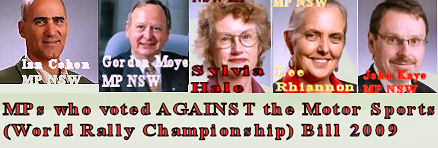
LEGISLATIVE COUNCIL
Tuesday 23 June 2009
[...]
__________
MOTOR SPORTS (WORLD RALLY CHAMPIONSHIP) BILL 2009
Second Reading
Debate resumed from 17 June 2009.
The Hon. TREVOR KHAN [6.15 p.m.]: The Liberal-Nationals will not oppose the bill, but at the outset I make it clear that we will seek to ensure that there is a full and independent review of the rally following the initial running of the event this year. It is anticipated that the Government will support the amendment. I clearly state that the amendment directly reflects the hard work and quite intense lobbying conducted by the member for Tweed, Geoff Provest, and the member for Lismore, Thomas George, both of whom have worked tirelessly to ensure that people who live in the Far North Coast have a voice at the table when Parliament is dealing with legislation relating to the rally. I commend both the member for Tweed and the member for Lismore for their effective advocacy on this issue.
The object of the bill is to facilitate the conduct of a major sport known as the World Rally Championship. It is worth noting that in September 2008 Events New South Wales and the Confederation of Australian Motor Sport announced that the northern rivers region of New South Wales would host the Australian round of the Fédération Internationale de l'Automobile [FIA] World Rally Championship in 2009 and then every two years until 2027. It is worth noting that only now has the legislation been introduced after many months of relatively little action. That is one of the issues that has motivated the Far North Coast community to express concern.
Nevertheless, it is estimated that the rally will generate up to $100 million in direct economic benefits to New South Wales over the life of the agreement through the creation of up to 2,000 new jobs and an estimated 92,000 visitor nights. These are significant benefits to the local community and, self-evidently, also for the entire State of New South Wales. The first event, the Repco Rally Australia, will be held in the Tweed and Kyogle local government areas from 3 to 6 September 2009. This bill provides that the legislation will be reviewed five years after it receives assent. The Liberal-Nationals, understanding the need to give certainty to the local community, to the rally proponents and to millions of World Rally Championship fans throughout the world—and I have to admit to being one of them—will not oppose the bill but will seek to move an amendment in Committee that is aimed at producing a full and independent review of the rally following the initial 2009 event.
One of the purposes of the amendment is not only to ensure that the review takes place but also to ensure that the review includes, in a spirit of cooperation, the Kyogle Council and the Tweed Shire Council, thereby remitting some ownership of the event to the local community and ensuring a degree of transparency that presently is lacking. The Liberal-Nationals believe that the amendment will give the legislation reasonable balance between the need for the proponents to get on with the job of planning this year's event and the local community to determine what impact an event such as this will have on their region in the future.
Liberal-Nationals are advised that the Kyogle Council supports the rally, but has requested that a review mechanism be built into the legislation to enable any issues that may arise from the initial event to be examined and resolved. The Liberal-Nationals are advised that the Tweed Shire Council also wants a review mechanism built into the legislation. In a press release dated 10 September 2008, the Tweed Shire Council's general manager, Mike Rayner, welcomed the announcement, saying that the event would boost the local economy and showcase the Tweed to a worldwide television audience as a tourist destination.
Mr Rayner is quoted as saying:
This event has a massive audience—last year 50 million people in 180 countries watched each round of the World Rally. That will bring immeasurable exposure to the Tweed and northern rivers region, both nationally and internationally.
In a press release dated 3 June 2009 Tweed Shire Council's mayor, Councillor Joan van Lieshout, indicated that on 3 June representatives from Tweed and Kyogle councils met with the Minister for State Development. Councillor van Lieshout is quoted as saying:
We were advised that the decision was made by the Department in order to secure the event following commitments for the delivery of relevant equipment from overseas.
While I am obviously very disappointed that the event has been taken out of the hands of local government, I have uppermost in my mind the concerns of the community in regard to transparency and full communication with all negotiations.
It has been on the agenda for many months awaiting relevant development application and during this time community members have expressed their concerns that a 'fast car rally' is not within the vision for the "Tweed Naturally" imagine which is foremost in our strategic tourism planning for the future of the Tweed.
I am determined that the process will be fully transparent and have requested that a review of the whole event be taken prior to any further agreements for the future.
We have the opportunity now to set the forum for all future events of this nature through the democratic examples set by this event.
Members of the local community are angered by the course of action taken by this State Labor Government. There has been a lack of proper process and the community has been locked out of the decision-making process. While the Liberal-Nationals support the rally and will not oppose the bill, we condemn the State Labor Government for its heavy-handed approach when dealing with the local community. The role of the Government is to ensure that the local community is fully informed and taken through the process, rather than railroaded. Clearly, there are benefits to the local community and to the entire State. That is why the Liberal-Nationals will not oppose the bill.
However, this does not excuse the State Labor Government from locking the community out in the manner it has. All too often that is what we see from this State Labor Government. We see a lack of proper process, a lack of planning and a lack of infrastructure, and now we see tourism projects drawn up on the back of a desire to achieve positive headlines in the paper. This is not how our State should be run, and the local community is justified in its anger that once again the State Labor Government has demonstrated that it is more interested in a headline than what is right for the local community and, indeed, the State. Once again I congratulate the local member for Tweed and the local member for Lismore on their considerable advocacy on this matter.
Reverend the Hon. FRED NILE [6.22 p.m.]: The Christian Democratic Party supports the Motor Sports (World Rally Championship) Bill 2009, the purpose of which is to facilitate the conduct of the Australian rounds of the motor rally known as the World Rally Championship on a biennial basis in the northern rivers region of New South Wales. The Christian Democratic Party support the bill because of the advantages to the economy and to tourism—I am a bit surprised by the criticism of the tourism aspect—and in terms of jobs. The world rally championship organisation is one of the highest profile international four-wheel motor sport championships after Formula One, with approximately 51 million people viewing each round of the televised world rally championship. In September 2008 Events New South Wales and the Confederation of Australian Motor Sport announced that the Australian round of the world rally championship would be staged every second year in the northern rivers region of New South Wales from 2009 until 2017, with an option to extend until 2027.
Events New South Wales estimates that the event will generate more than $100 million for the New South Wales economy over the duration of the agreement. It is also anticipated that it will boost tourism and jobs and deliver major economic benefits to regional New South Wales. The first event, Repco Rally Australia, will be held in Kyogle and Tweed local government areas from 3 to 6 September 2009. Obviously, when putting on such a large event—as was necessary for the staging of the super 8 event at Olympic Park—special legislation is necessary to streamline what has become a complicated maze of approval processes. If one were forced through the maze of approval processes, the first Repco event would probably not take place until 2027, if at all. It is important to have legislation that will allow a similar approval process to operate but still ensure that appropriate conditions can be imposed to address matters such as public safety and environmental protection.
I have received many requests to oppose the legislation. When I read those requests it became clear to me that it is easy to stir up opposition, as happened recently with mining legislation that was before the House. It is easy to create an atmosphere of fear and concern, and that has been happening with this event. Some have even said that many teenage drivers will go mad and kill each other after this event. In my view what encourages dangerous driving in teenagers are video games which are played by children—not necessarily teenagers—that encourage the smashing of cars and the ramming of police cars and so on. Many children engage in that form of entertainment day after day. I think that video games will have more effect to encourage speed and carelessness by teenage drivers, than will a Repco event that will take place between 3 and 6 September. The Christian Democratic Party supports the bill as it will facilitate this event.
[The Deputy-President (The Hon. Amanda Fazio) left the chair at 6.27 p.m. The House resumed at 8.00 p.m.]
The Hon. HENRY TSANG (Parliamentary Secretary) [8.00 p.m.], in reply: I thank members for their contributions to this debate. The Motor Sports (World Rally Championship) Bill 2009 is designed to facilitate the conduct of the Australian round of the World Rally Championship, an internationally popular motorsport that was watched by 860 million people around the world in 2007. The bill puts in place a mechanism to consider important matters such as the environment and public safety. It provides certainty for the event and secures the estimated $100 million boost to the New South Wales economy. The boost to the economy is recognised by the Murwillumbah and District Chamber of Commerce and Tweed Tourism. Tony Zuschke, business owner and President of the Murwillumbah and District Chamber of Commerce, said:
This event has the potential to deliver massive economic benefit to the region and, recognising that, the Chamber is working with business and with the community to ensure we're geared up fully to make the most of the opportunity. Visitors to the rally can expect a fantastic experience during their stay here, and we're confident that they will take away plenty more reasons to keep coming back.
Phil Villiers, General Manager of Tweed Tourism, said that the rally would give a huge boost to tourism in the region. He said:
From a marketing and promotional perspective the rally will provide the Tweed and surrounding area with a tremendous opportunity to showcase our story to the world. With major corporate attendance expected at the event, we will also be working actively to encourage businesses to discover the Tweed for many other reasons besides the rally, for instance for conferences and events.
Mr Ian Cohen: This is the biggest shaft I've ever had. Were you shafted as well, Reverend Moyes?
[Interruption]
The Hon. HENRY TSANG: Mr President, as we will consider the bill in Committee, I am sure that Mr Ian Cohen can make his comments at that time. Is that all right?
Mr Ian Cohen: No, it is not all right.
The Hon. HENRY TSANG: You were not here—
Mr Ian Cohen: You knew that I wanted to speak on this bill.
The Hon. HENRY TSANG: You were not here.
Mr Ian Cohen: You knew I wanted to speak.
The Hon. HENRY TSANG: You were not here.
Mr Ian Cohen: You and the Liberals wouldn't give me the opportunity to speak.
The Hon. HENRY TSANG: The bell was ringing and you were not here.
Mr Ian Cohen: I thought Fred was still speaking.
The Hon. HENRY TSANG: You may have thought that, but he was not speaking. The member will have the opportunity to speak in Committee.
The PRESIDENT: Order! Members will speak through the Chair.
The Hon. HENRY TSANG: As I said, the House will give Mr Ian Cohen the opportunity to comment on whatever he likes. He should not get so angry; life is too short. Consultation with the community and with councils is a priority. The Minister for State Development met with Tweed and Kyogle councils, and is committed to ongoing close consultation with them. I commend the bill to the House.
Question—That this bill be now read a second time—put.
The House divided.
Ayes, 21 [i.e. those in favour of a second reading of the bill]
Mr Ajaka
Mr Catanzariti
Mr Clarke
Ms Fazio
Ms Ficarra
Mr Gallacher
Ms Griffin
Mr Khan Mr Lynn
Mr Mason-Cox
Reverend Nile
Ms Parker
Ms Robertson
Ms Sharpe
Mr Tsang
Mr Veitch Ms Voltz
Mr West
Ms Westwood
Tellers,
Mr Donnelly
Mr Harwin
Noes, 5 [Ed. i.e. those against a second reading of the bill.]
Mr Cohen
Reverend Dr Moyes
Ms Rhiannon
Tellers,
Ms Hale
Dr Kaye
Question resolved in the affirmative. [Ed. i.e. Moyes and the other five who voted against the bill lost the motion, so the bill was put to the house a second time.]
Motion agreed to.
Bill read a second time.
The Hon. HENRY TSANG (Parliamentary Secretary) [8.09 p.m.]: I move:
That the President do now leave the chair and the House resolve itself into a Committee of the Whole to consider the bill in detail.
Question put.
Division called for.
[In division]
Member Gordon Moyes physically locked out of debating Chamber
The PRESIDENT: Order! An unfortunate situation has suddenly arisen. A member who intended to contribute to the second reading debate on this bill was locked out of the Chamber at a time when he, if present in the Chamber, could have sought the call. The member sought to gain entry to the Chamber through a side door but the door was locked. The member then knocked on the door but was unable to gain entry to the Chamber. Because no member at that time sought the call, I gave the call to the Parliamentary Secretary to reply to the second reading debate.
That members are not present to participate in debate when the bells have been rung and the House begins to sit is neither here nor there: that is a matter for members. If members wish to contribute to a particular debate, they should be present when that debate is called on. However, if a member is prepared to speak and intends to do so but is physically unable to enter the Chamber, a matter of privilege arises.
I propose to call off the division and to give the call as a matter of privilege to Reverend the Hon. Dr Gordon Moyes, the member who was unable to enter the Chamber, to allow him to contribute to the second reading of the bill. At the conclusion of that speech I will ask the Parliamentary Secretary to move again the motion to enable the House to resolve itself into a Committee of the Whole to consider the bill in detail.
Division called off.
Privilege
The PRESIDENT: Order! I call on Reverend the Hon. Dr Gordon Moyes to address the House, as he wished to do earlier but was unable because he could not enter the Chamber.
[Candobetter Ed. Note that the speech below is published here, with editorial headings and punctuation changes. Scroll to end of speech here for more interesting comments, conduct and debate]

Gordon Moyes' Speech against the Bill
Reverend the Hon. Dr GORDON MOYES [8.17 p.m.]: I thank the House for extending this privilege. It is very rare that one gets the opportunity, in an institution as old as State Parliament, to set precedent in the regulation and conduct of the House. The Motor Sports (World Rally Championship) Bill 2009 is a bill for an Act to facilitate the conduct of the international motor sport known as the World Rally Championship. Clauses 13, 14 and 15 override the Local Government Act 1993, the Forestry Act 1916, and the Water Management Act 2000 by allowing the Motor Sports (World Rally Championship) Bill 2009 to authorise people to take actions that are expressly not permitted by those Acts. Clause 20 protects the exercise of certain functions of the Minister, or any delegate of the Minister, or a public authority, from challenge or review before a court or administrative review body, or from being restrained, removed or otherwise affected by any proceedings.
The Northern Rivers area of New South Wales is pristine and beautiful. It is incredibly rich in flora and fauna, with more species of fish, birds, amphibians and mammals than even the world-famous Kakadu area of the Northern Territory.
The region also has many threatened fauna and plant species that need to be protected. The area is recognised as having diverse ecosystems, including different kinds of rainforest, wetlands, heath lands and important zones between the land and the water.
Some areas of Australia are so special and unique that they have received official recognition, and this is one of them. In 2008 the Federal Government launched the National Landscape Program, selecting only a handful of regions. Along with Kakadu and the Great Ocean Road, the Mount Warning Wollumbin Caldera was awarded special status as a national landscape icon by the Ministers for tourism and the environment. The green cauldron, as it is commonly called, is a designated area stretching from Byron Bay up past the State border into the Gold Coast, and was selected because of its distinctive natural features, including the world's second-largest shield volcano crater, which has shallow sloping sides, awesome environmental biodiversity and a very rich Aboriginal heritage.
I have wonderful memories of visiting this area on many occasions, particularly the area around Kyogle, which my family has visited several times. Kyogle is a town of approximately 4,000 people in the Northern Rivers region of northern New South Wales. It was founded as a lumber camp in the 1930s, with red cedar and hoop pine being the main timber trees. It is about 750 kilometres north of Sydney, quite close to the border. The Kyogle area has cattle grazing, dairy farming and forestry as its primary industries, and is a tourist gateway to many national parks. The mad rush of the modern lifestyle has lost so much of the simplicity and beauty of the more natural pace of life and the smaller scale of living on the land. The people living in Kyogle and Tweed shires have purposely set out to recapture this preferred quality of life and are living their vision in the most committed way.
The back-to-the-land lifestyle is a homey, environmentally based world view that embraces home-grown organic food, handmade items of daily life, eating actual cooked meals rather than fast food on the run, raising poultry and cattle, birdwatching, bushwalking and a philosophy that supports the ongoing daily work of a commitment to recycling and a deep love and respect for, and the protection of, wildlife. These are the kinds of quiet pursuits that they embrace and encourage in their region. The people of Kyogle and Tweed collectively have identified the environment and its protection and enhancement as their top priorities, and the extraordinary natural environment is the reason people choose to live there. I emphasise the fact that the people as a community and as a region have purposely chosen that natural, life-affirming, low-carbon-footprint, close-to-the-land lifestyle.
As part and parcel of that world view, they have eschewed big, noisy, air- and water-polluting, old-fashioned, high-energy-using pastimes from the manic-paced cities, such as international motor car racing. It is true that there has been a small Speed for Tweed race of historic motor cars for the past five years on the streets of Murwillumbah, but it is very small scale, low key and charming. It is run as a non-profit event by the locals for the benefit of locals. It has raised thousands of dollars for local charities and Murwillumbah hospital. The race is tiny in comparison with the major-event motor car races of a scale threatened by the Repco Rally, which is simply not welcome there for many reasons—one of which is that it is an international business. It does not even pretend to benefit or serve the interests of local people. It is merely a commercial enterprise, a business. It does not share the ethos of the region and will offer nothing of value to the community.
Most of all, the Repco Rally simply does not belong there; it is seriously out of place. If the rally proceeds, it is an insulting imposition on the locals by external parties with truly alien values who are apparently such arrogant people that they will not take the broad hint that they are not wanted. Indeed, the local people could hardly be more expressive of their point of view on this matter, having written to their representatives and to the newspapers, marched in their localities, attended consultations, and done everything else they could think of to get someone to pay attention to their concerns—which range from indignation at being treated shoddily by the State Government to concerns about damage to the environment, and to issues with the suspect economic claims behind the decision to hold this race in their vulnerable natural environment.
Previous speakers who praised the rally indicated that it will bring $100 million of value to the area. They do not understand what they are talking about. For example, $100 million over what period? It is certainly not for this one race that is coming up; nor for the one in two years time or the one in 10 years time. It is the accumulated value they think they might get if everything is done and all options are accepted between now and 2027. A more true picture comes from Western Australia. The Western Australian Government no longer wanted the rally, indicating that it was costing Western Australia $6 million a year and it was not getting economic value to make up for that $6 million.
I have received, as I guess have many members, hundreds of emails, letters and visits from people in the area pointing out many different aspects. Obviously I will not go through all of them now. However, one concerned citizen, Dr Jules Lewin of Stokers Siding, pointed out to me that Repco Rally's socioeconomic impact assessment was so poorly put together, without being substantiated or having verifiable projections or references, that in scientific, medical and management circles it would be flatly rejected. The methodology was inappropriate, the numbers were inadequate, the data presentation was obscure and the analysis was unsound and contradictory.
In the assessment there was no consideration of the current economic crisis; nor were there any references to current social trends, such as green driving, concern for many environmental issues, the concept of sustainability or the impact of peak oil. With such a lack of insight and grasp of elemental issues, the so-called impact assessment is utterly irrelevant. No multimillion-dollar contract meant to last a minimum of 10 years, plus a 10-year extension, should be allowed to proceed on the basis of the authenticity, accuracy or recommendations of this flimsy report. Also, in the socioeconomic impact assessment the Repco Rally organisers claim to have consulted with the community, but a letter written to a number of local newspapers stated the following:
We the undersigned wish to advise the community that our respective community associations have been totally misrepresented in the report entitled Rally Australia Socio-economic Impact Statement, which was committed by Repco Rally Australia. We have been listed on page 29 of the report as being the representatives of our respective community associations who were supposedly part of the community consultation process. We wish to advise that no such community consultation ever took place.
The letter is signed by a significant number of leaders of community organisations from the area. Claiming that community consultation took place might look good on paper, but it has now been completely discredited as an untruth. If the Repco Rally organisers have not provided meaningful background research, presented accurate information or genuinely consulted with the community, and they have misrepresented their own activities, what is their word worth on anything else? One lady wrote to me about Sargents Road in Kyogle, where she lives, which is a core koala habitat crucial for the survival of the species. She cited the New South Wales Department of Environment and Climate Change [DECC] November 2008 Recovery Plan for the Koala, which seeks to ensure the survival of the koala in the wild. This State report reinforces the need to recognise the value of koalas to the community in terms of their presence in the landscape and their potential to attract eco-tourism.
How then can another State department come along and act in opposition to those interests already committed to by that department? Sargents Road is not the kind of road recommended for racing—not if we care about animals and their habitats. In fact, the busy local wildlife rescue volunteers say that already far too much wildlife is injured and killed on the roads by automobiles, and that more cars racing on those roads is the last thing the animals need. They also mention that the methods proposed to scare the animals away from the roads—I wonder how many Government members understand this—will likely lead to stress reactions and heart failure in the animals. There will be extremely loud noises, such as banging and so on, to frighten animals away.
Additional concerns have been reported to me in letters from people, such as problem driving and street racing. I will not comment on those. We all know that streets and roads are already deadly to innocent drivers and pedestrians. The news is always full of copycat racing in every area after it hosts such races. Do we really want to inspire more of them? The answer from the people of the North Coast is a resounding "No". The local Kyogle and Tweed Landcare teams, made up of people who give their time free cleaning up, salvaging and repairing damaged ecosystems, dread the havoc that will be wreaked by such an event in this area—one that they have tended with such devotion over the years. The members of the Tweed Valley Wildlife Carers and the Caldera Environment Centre, who have worked for decades protecting the natural environment, are sick at heart over this bill, which will force on the rally in an area where it should not be allowed.
I assure members that local residents in this area are informed and intelligent; they know their special environment is critical to the growth of tourism in the area and is, in fact, its greatest attraction. Any activities that are destructive of the environment are anathema to them. Some believe that the Government will be in contravention of the Convention on Biological Diversity, which was signed in 1992. Motor sports are an incompatible activity and irrelevant to the local agricultural industry, and can only undermine the World Heritage value of the area. Any anticipated profits from motor sport enthusiasts would be dwarfed by the year-round loss of ecotourists once the green branding of the area is tainted. In addition to the danger to wildlife at risk from the rally, there are also many companion animals and domestic stock living in this area that are very sensitive to noise and can be terrified by screeching, careening and unpredictable motor-generated noises. Even if they were able to stay safely indoors, they will be bombarded by noise, which to animals is perceived as a threat. Such noise permeates and penetrates residential walls as if they were not there. This kind of noise should be isolated away from population centres—and not allowed in an area known for its nurturing silence.
The excessive noise pollution will be imposed on the human population too, of course. The standards set to protect people and animals will be overruled by this bill that we are considering passing, so that people will have no right to complain—and that is wrong. Those standards were established for a purpose, and to remove them casually in this way is a great wrong. Exposure to excess noise is known to raise the heart rate and blood pressure of many people and to contribute to anxiety; it should not be inflicted on populations as if it is of no importance. The wives, families, counsellors and companions of 4,000 war veterans living in the area have expressed their great concern over the anticipated helicopter noise—which they anticipate will cause psychological disturbance and deep anxiety as it triggers post traumatic stress episodes in the vulnerable, particularly Vietnam War veterans.
Even the anticipation of one helicopter circling above them is unbearable, much less the dozens of helicopters that will be used over the three-day event. To put veterans through such stress is just unconscionable. Their absolute dread is really escalating into a serious mental health issue for them, their families and their communities. Previously I have mentioned that I was responsible for establishing a mental health facility in Taree to handle post-war traumatic syndrome. Hundreds of Vietnam veterans from the northern rivers came to the Wesley Mayo clinic at Taree for psychological services. In fact, the recently named psychological condition of "solistalgia" is now widespread in the North Coast area. Solistalgia is defined as "the deep distress induced by environmental change, which is exacerbated by the sense of powerlessness and loss of control over the changes that are occurring".
Then there is the spillage of oil, petrol and other wastes that will seep into the ground, into the atmosphere and onto roads, which is unconscionable in such a pristine area. The air pollution generated from motor racing is unhealthy for people and all other living things, including trees close to the track. The amount of dust that is raised is dangerous for asthmatics and people with respiratory conditions, not to mention dirty and distressing for the people whose homes it will fill. Advising them to go inside and turn on the air conditioning is not good enough. People have outdoor work and busy lives to live and cannot easily take refuge indoors, and many do not have the option of air conditioning. Nothing will help animals cope with the particulate matter in the air that will sicken them. On the topic of pollution, it is reported that every member of the world rally racing team travels over 130,000 kilometres by air each year. Add that to all the carbon emitted by the activities associated with the rally and a thoughtful person cannot help but recognise that it is an unacceptable carbon footprint.
In fact, in this era of climate change, in response to the deadly global threat of increasing greenhouse gases, it would be far more sensible for the State Government to discourage all human activities that produce such a massive carbon footprint. Perhaps the rich race organisers think they do not have to worry about such matters, but climate change will eventually affect them too. There are also all the prudent economic arguments that many of my constituents have pointed out. Locals believe almost universally there will be far more irremediable damage than any possible benefit accruing from having full restaurants and accommodation for a few days every other year. The proposed benefits of showcasing the northern area to an estimated 51 million people worldwide, who are supposedly going to watch the racing on television, is outweighed by the actual damage done to the whole fabric of society, the already ill-maintained roads, the environment and the people. Some things just do not bounce back that easily, and having had an event of this magnitude forced upon them is not going to sit easy with residents. Many are simply not resilient enough to cope with the magnitude of the change being thrust upon them.
I will say very little more. It just does not make sense on any level. The history of the rally in other States has been lacklustre, leading to large financial losses by taxpayers. The Western Australia Government expressed that by not being willing to let it continue in that State? It is on record as saying they it was deceived by rally organisers. Why have Suzuki and Subaru withdrawn their sponsorship of the rally? Why did Victoria or Queensland not want it? Why did the Welsh Assembly Government recently terminate its five-year contract after just two years? I will tell you why. Because all the promised benefits that have been presented to members of the Government and the Opposition were hyped to them were not forthcoming, after all—and if we in New South Wales are sold the same bill of goods, the same thing will happen on the North Coast.
People have asked me why are the taxpayers of New South Wales being asked to fund this rich-people's sport? Why is the State Government promising this international commercial enterprise free labour of hundreds of local volunteers, particularly, who are already overstretched by their efforts and services during two recent floods in the area? As well as the money paid to the Repco rally organisers the State intends to provide free of charge a number of bushfire brigades, 150 extra police, the services of the State Emergency Service, hospitals and all their associated staff on stand-by, on and on ad infinitum. This event will run at a loss for the State, but not for the organisers. Even though the people who thought the idea had some merit now recognise the contempt in which their region's concerns are being held by the arrogant rally organisers who act as if they have been given carte blanche to do whatever they like. The residents know full well it is not democratic, not respectful, not what they expect or deserve, and not right. One wrote to me and said:
Apart from being a very bad idea and unpopular with residents, this is a dangerous practice: taking control over events that the local councils should be regulating, in order to benefit outside elites.
Another wrote:
Have our governing bodies become so anesthetised to the fact that they are elected to represent the citizens, and not given the divine rights of kings?
There is one more group whose interests and concerns I have not yet mentioned, the Aboriginal women of the Githabul people, whose representative contacted my office when they heard that I was listening to all sides of the issue.
The representative of the Githabul people explained that under the agreement reached in late 2007 the Githabul people were going to be allowed joint management of national parks and State forests with the New South Wales State Government. Regarding the Repco rally, there was consultation carried out with one sole male elder. But he, as a male, was not in a position to know anything about the areas that are sacred to the Githabul women and apparently the women are very distraught that they have had no voice in presenting their deeply honoured cultural concerns to the rally organisers and the New South Wales Government, and they call upon both to recognise that they too have a right to be heard. To them these issues are of life and death importance and they do not want the Repco rally to have access to particular areas on the race route as announced that are actually sacred territory.
Forcing through the bill does not demonstrate respect for the opinions, needs and lives of people and their families in these areas. This is not good manners, it is not social justice, and it is not democracy. In fact it is a blatant flouting of the democratic process and does not represent the value system that Australians have gone to war to defend and protect. It is an insult to war veterans and families in that area. I am disturbed to note that this is becoming an all too familiar pattern, with bills being used by the Government to disregard other tiers of government or authorities in order to force its own way without regard for the feelings or safety of the people on the receiving end. Our political system has been built up over many years with multiple layers of power and checks and balances, and we must not give them away.
I conclude, Mr President, by reading a passage from the Code of Conduct for Members, which you signed and sent to every member of this House. I am sure that it has been quite a while since many of us read or thought about it. It states:
Members of Parliament acknowledge their responsibility to maintain the public trust placed in them by performing their duties with honesty and integrity, respecting the law and the institution of Parliament, and using their influence to advance the common good of the people of New South Wales.
Not all of my constituents are against motor racing per se, if it can be held in an area that will be undamaged by it and if nearby residents actively want it happening there. It is a hard ask, though. No residents that I have spoken to in the area, or anywhere near it, want motor races to be held near their children's schools, on their village streets or on rural roads. I do not approve of anything that can be construed as a misuse of power and, therefore, I will not support any bill that allows large-scale events unwanted by the people who would have to host them. I encourage any other members here today who still think they have either an environmental or a social conscience to join me in refusing to support what I believe is an ill-conceived bill. I thank you, Mr President, for extending me the privilege of being able to speak.
The Hon. HENRY TSANG: I move:
That the President now leave the chair and the House resolve itself into a Committee of the Whole to consider the bill in detail.
Question put and resolved in the affirmative.
In Committee
The CHAIR (The Hon. Amanda Fazio): I propose to deal with the bill by parts. There being no objection, the Committee will proceed to consider part 1.
Mr IAN COHEN [8.44 p.m.]: On behalf of the Greens, I say in Committee that I strongly oppose the Motor Sports (World Rally Championships) Bill 2009, which is a burning indictment of the pervading culture of the New South Wales Labor Party. I am constantly amazed by the amount of special legislation that the New South Wales Labor Party regurgitates in this Chamber to facilitate all manner of incursion on basic rights. However, I was not at all surprised at the Government putting forward special legislation to enable this rally to go ahead. As I feared when I spoke in this Chamber in May, the rally deal was stitched up a long time ago. The rally organisers have been taking bookings and proceeding with great confidence without even lodging a development application.
The people have been robbed of their capacity to determine what happens in their area
The people of the North Coast have been waiting to see the rally be considered by their local council, which should be the determining authority. But it has been robbed of its capacity to participate in determining what happens in its area. The bill has the usual grubby and sleazy hallmarks of Labor's special legislation turning off key environment and land use planning legislation because there is one rule for the New South Wales masses and one for the international racing crowd. Taking away residents' common law rights and usurping the will of local communities is all encompassed within the bill—all hallmarks of this brave and noble Labor Government.
The bill overrides the National Parks and Wildlife Act, the Environmental Planning and Assessment Act, the Threatened Species Conservation Act, the Forestry Act, the Water Management Act, the Fisheries Management Act and the Local Government Act.
The special legislation will foist a car rally on the Tweed and Kyogle shires of northern New South Wales this September and a further four more rallies to be held biannually until 2017. On top of turning off the State's key environmental legislation, the bill will also allow the Minister to accommodate any requirements of the rally organisers. The legislation is not restricted to the northern rivers region. It will allow the Minister to prescribe any area in New South Wales as part of the declared rally area by regulation. This means technically that the Minister can declare the whole State one big rally course and turn off every key piece of environmental legislation, and the decision to do so would be immune from any judicial review at all. Some might say it is total insanity. Has this Minister gone mad? Is he somewhat of a modern-day Nero? There is no personal advantage, or will the Minister gain some personal advantage by building up his credit and riding off to some corporate retirement? Worst of all, Minister Macdonald has inserted a double-glazed privative clause in proposed section 20—
The CHAIR (The Hon. Amanda Fazio): Order! The member should be speaking to part 1 of the bill, which incorporates clauses 1, 2 and 3, and should not be making reflections on other members.
Mr IAN COHEN: I am expressing myself in Committee due to circumstances somewhat outside leave—
The CHAIR (The Hon. Amanda Fazio): I am aware of that. Please proceed.
Mr IAN COHEN: If that means that I have to go through every section of my speech at every point of the Committee, I will do so. I would ask the indulgence of the Committee to allow me to at least express myself, which is a right that I have as an elected member of this House—
The CHAIR (The Hon. Amanda Fazio): Order! Nobody is disputing the right of the member to speak to different parts of the bill, but in doing so he must not make reflections on other members.
Mr IAN COHEN: Even the improper exercise of functions by protected persons is exempt from any judicial or administrative challenge whatsoever. This is probably one of the most extreme privative clauses crafted by the hands of Minister Macdonald, who refuses to be accountable for his decisions. It is a total joke and this level of legislative extremism to secure commercial certainty should be thrown out.
The Hon. Ian Macdonald: Point of order: I do not mind the member making points about the bill, but he should not use the Committee stage to say outrageously stupid things about me. He should be brought to heel. There are other forms of the House available to him if he wishes to attack, and the Committee is not one of them. It was not my fault that he missed the call.
The CHAIR (The Hon. Amanda Fazio): I remind Mr Ian Cohen that he should not make reflections on other members unless by way of a substantive motion. It is in order for him to speak about his concerns about the bill, but he must not speak about the Minister who has carriage of the bill.
Mr IAN COHEN: Thank you, and I must apologise to the Minister. I did not realise he was such a sensitive character.
The Hon. Rick Colless: Precious.
Mr IAN COHEN: It is rather precious, and I acknowledge the interjection of the Hon. Rick Colless. The Minister is good at dishing it out but cannot take a little bit of criticism. I am surprised he finds this such a sensitive issue.
I read on the Rally's website that the world controlling body for motor sport, the Fédération Internationale de l'Automobile [FIA], was understood to have been concerned with media reports about the event and sought an assurance from the Government that it would proceed. With this legislation it will do more than just proceed.
The FIA and Rally Australia, a private company, can just sit back and let the Government do all the work. Inconvenient local planning laws? Consider it solved. This proposed legislation will sweep them under the carpet. Endangered wildlife getting underfoot or under a wheel? This legislation will override the National Parks and Wildlife Act and the Endangered Species Act, and hopefully the helicopters will scare the koalas away. Annoying local council and residents? Do not worry, just go over their heads.
I would like to commend the Hon. Gordon Moyes for his speech on this bill in which he raised a number of issues that I was not aware. He referred to the number of Vietnam War veterans living in that part of the world, and I commend him for raising that issue. It shows how in touch he is as a church representative, as well as a representative of this House, about the problems and issues in country areas. There is the clear example of the Vietnam War veterans, but many others with all sorts of problems retire to the country for a quiet life. They go there deliberately for that reason and, as the Hon. Gordon Moyes said, to get away from the rat race in the city. People go to these areas to escape the insanity that is highlighted by this type of event. There has been no development application, no council meetings and no problems. Funding from Events NSW? "No problem again. Just keep it commercial in confidence so no-one knows how much we are spending." This is said to be commercial in confidence but where are the competitors? There are none.
The Hon. Matthew Mason-Cox: Queanbeyan.
Mr IAN COHEN: I acknowledge the interjection by the honourable member. But where are the competitors who would demonstrate the commercial viability of this event? There are none. It is a sewn-up deal, so why is it commercial in confidence? Why do we not have some degree of transparency from this Government? It is certainly quick to assess the profit to be derived and to make a statement about that. It just tosses up the figure of $100 million to indicate the sort of money that will be made. Is there a proper assessment of the event? No. It is commercial in confidence even though there is no competition for the event. We are heading in the right direction if we are heading for a State built on cheap, snake oil salesman-style entrepreneurialism. The Minister is looking like some sort of corporate Rambo. He has gone way beyond the principles that the Labor Party once stood for so that not even the hard Left can reel him in.
The Hon. Ian Macdonald: Ms Lee Rhiannon has certainly stirred you right up.
Mr IAN COHEN: I acknowledge the interjection by the honourable Minister claiming that my reaction is somehow caused by my fellow Green Lee Rhiannon. I have to say that everything that has occurred recently has had no input into my feeling of revulsion at what this Government is doing and the way it is acting. Talks about the rally are reported to have been going on for two years yet Repco Rally Australia [RRA] could not manage to prepare a development application that could possibly justify this event. The FIA, headed by Max Mosley, applied a bit of pressure and the caped crusader, Minister Macdonald, stepped in to save the day. As I pointed out in the question to the Minister—
The Hon. Ian Macdonald: Point of order: The member should stop the gratuitous slights he is making in this contribution. He is absolutely abusing the forms of this Chamber. If I had the right to reply to his comments, as I would in a second reading debate, I would certainly make a few comments about the nonsense he is talking. After all, the first I learnt about all of this was on 17 May.
The CHAIR (The Hon. Amanda Fazio): Order! As I ruled earlier, the member should not make comments about the Minister who has carriage of the bill. He should confine his remarks to the bill.
Mr IAN COHEN: I withdraw the comment. The Minister is no caped crusader. As I pointed out in a question I asked Minister Macdonald last week, I find it curious that a New South Wales Government that has become obsessed about marketing and branding our iconic natural tourist attractions, such as the Green Cauldron, could then turn around and hold a rally car race through the same areas. It is totally illogical. There are no criteria put forward by the Government to indicate that this rally is a good idea. It is simply a case of the Minister trying to circumvent our environmental planning laws for a corporate patron's convenience. The event will not be a boost to the economy. A bit of research would have shown the Minister that Western Australia withdrew its support for the rally in that State because as the Western Australian tourism Minister said—and I would suggest he would be pretty much in favour of a profit-making event:
$6 million for one single event that returns $1.60 for every dollar invested by the state, when the average return is about $8 for every dollar invested by the state, is not a good return on investment.
The Minister for State Development, Ian Macdonald, says it will boost the economy by $100 million. It is a dubious figure and I would like to know how it was arrived at and how much the taxpayers of New South Wales are expected to shell out to get this return. As I said earlier, it is commercial in confidence; despite the fact there is no competition the details are protected. The same amount is quoted as the return that we can expect from the V8 Supercars event. I wonder if this is just a shelf figure that is trotted out for such events. It seems to have the consistency of an Iranian election result.
Elsewhere throughout the world such rallies are increasingly on the nose. Rally Finland is reducing the organising budget for this year's event by as much as 40 per cent after the loss of 1,000 pre-booked VIP guests. The Welsh Assembly Government served notice of termination of its agreement with the FIA World Rally Championship organisers, and the British Motor Sport Association has had to jump in with £2.2 million to ensure the events go ahead. In referring to the 2006 Wales Rally, Mr Ieuan Wyn Jones, the Deputy First Minister and Minister for the Economy and Transport in the Welsh Assembly said:
… the event has only had a marginal impact on the development of the Welsh motorsport/advanced engineering sector, and in terms of repeat visitation generates a modest tourism spend of circa £1 million per annum. The report confirmed that the 2006 Rally generated £3.3 million of gross value added, which represents a return on investment of less than 2:1. In comparison, even Event Scotland, the national events agency in Scotland aim for a return on investment of 8:1 across their portfolio of supported events.
So-called motor sports increasingly irrelevant in energy constrained world: Restoring a rail link would help people become more mobile and travel to work and between towns
If New South Wales is to have five of these events over the next 10 years, how reliable is the supposed revenue likely to be? The so-called motor sports—and I do wonder about this being a sport at all—are increasingly unpopular and irrelevant in an increasingly energy constrained world. If this Government were really serious about boosting the local economy of northern New South Wales, it would restore the Casino to Murwillumbah rail link. An event that occurs for a few days every two years is not going to sustain the local economy. The return of the rail link would help people to become more mobile and allow them to travel to work and between towns for commercial purposes.
With good transport links so many opportunities would arise and businesses would be facilitated. The whole community and the local economy would flourish. The funds this Government is committing to a brief and intermittent so-called sporting event would be better diverted to restoring that rail link. The people of the Tweed and Kyogle shires are really angry about this legislation. Mr Rick Wagner, a resident who lives along the proposed route writes:
Since this event was brought to the Public attention I have been in contact with RRA [Repco Rally Australia], Kyogle Council and Councillors on a regular basis to try and find out how this event will affect my life. I live on the route, in fact my property is on both sides of Sargent Rd which is on one of the special stages of the event.
All along RRA have said trust me and wait for the Development Application to be lodged with Council. Council has said I have to wait for the DA to be lodged before I can make any submission in regard to how it will adversely affect my life.
It now appears that any rights I may have had in this regard are being taken away by this legislation which will just about allow Repco Rally Australia to do anything they wish. The proposed legislation certainly appears to waive many other existing legislations that have been put in place to protect ordinary people and their civil rights. Noise, Dust Intrusion in the use of my property, environment, ecological even my own access to my property are all things that will be over-ruled by this legislation.
RRA is going to make millions of dollars from this event but for them to do this I, and many other residents along the route, will be severely inconvenienced and impacted not only financially but in the quality of our right to enjoy the environment in which we live. Many are already sick with worry about the impact of this event. Communities have become divided over the event and this in itself is unhealthy.
Denise Ewin from Tweed shire wrote:
I am a retired teacher with over 30 years as a practising pastor and teacher and 15 years during that time as an assistant principal. I was also the accredited manager in New South Wales and Queensland of our family-owned business operating tours, which encompassed many areas of the Tweed Valley, the granite belt and the outback town of Lightning Ridge. All our tours went to the world heritage listed Border Ranges National Park in the Kyogle Shire.
Whilst I am not in favour of this type of rally in any environment I am particularly opposed to it being held in this unique area of physical beauty which should not be intruded upon by speeding cars, helicopters and all that goes with this type of event causing havoc to the environment and to the people who live there.
Most people come to this area because of the special beauty and serenity, which is not only in this very scenic area but which also has some of the most diverse wildlife in New South Wales. This is indeed a blow to the people of the shires involved and might I say a very big mistake by our Government. The Government would do well to remember who elected it and to care for all the people of the State regardless of political affiliations.
The people who are writing to me are not the hysterical ferals that the Minister would like to dismiss; they are ordinary people with a genuine grievance.
The Hon. Ian Macdonald: Point of order: The member is straying outside the legitimate issues to which he should be confining himself. He just made another gratuitous insult and he should withdraw it.
Mr IAN COHEN: To the point of order—
The Hon. Ian Macdonald: I have never accused anyone of being a feral in relation to this bill or in relation to any other area.
Mr IAN COHEN: To the point of order: It is reasonable to say that on a number of occasions the Minister has insulted people that I represent. I would have to go through the Hansard to verify it, but on a number of occasions the Minister has spoken disparagingly about them. It is reasonable to raise issues that have occurred in the past in this House.
The Hon. Ian Macdonald: I ask him to withdraw it.
The CHAIR (The Hon. Amanda Fazio): Order! The Minister has advised the Chamber that he has not referred to anyone in relation to this matter in the terms referred to by Mr Ian Cohen. The Minister has asked Mr Ian Cohen to withdraw that comment and I suggest that he does so.
Mr IAN COHEN: I withdraw the comment. These are ordinary people with genuine grievances. John and Janet Townsend of Murwillumbah—a community-minded couple in their late sixties—wrote to me and to the Minister. They are disgusted about what they call the most breathtaking subversion of the democratic process that they have ever seen in Australia. They also said in a letter to the Minister, of which I received a copy:
You know perfectly well that this would not have been necessary if our Shire warmly welcomed the destructive event in the middle of one of the two most important areas in the east coast of Australia ...
The opposition to the event is NOT a rabble of 50 ratbags ...
We hope you have not been taken in by Garry Connolly of Repco Rally Australia telling you that the rally organisers have been collaborating on a carbon offsetting plan with Tweed LandCare Inc. ... or that esteemed consultant ecologist Dr Stephen Phillips has given the rally the go-ahead after completing his environmental assessment of the impact of the event.
Both these claims are made by Repco Rally Australia and seriously backfired on them. Angry Landcarers phoned them (we know, as we were two of them) and wrote letters to local newspapers refuting the implied association of Tweed LandCare Inc. ...
Doctor Philips for Kyogle Shire ... his brief has been limited to assessing "which particular threatened species may be at risk along a given stage, and why", and really all he has been able to conclude is that the rally will not kill enough rare or threatened species this year as to jeopardise the viability of the local species.
This Government has shown scant regard for indigenous cultural heritage and the rally shows a continuation of that pattern, with indigenous people shabbily treated in consideration of the rally. One person was selected to represent all Aboriginal interests. The draft Cultural Heritage Assessment [CHS], which should consider the possible impacts on significant Aboriginal sites, has been considered for only three of the rally's 15 competitive stages. The Cultural Heritage Assessment for the rally has not yet been finalised but decisions have already been made. This Government is prepared to trash Aboriginal cultural heritage and ignore Aboriginal people's concerns just to make a quick buck, if indeed there is a buck to be made.
I commend Reverend the Hon. Dr Gordon Moyes for elucidating that issue in his earlier speech. This Government proposes to override State planning laws to allow this rally to carve through an area designated under the National Landscapes scheme and named Australia's Green Cauldron—an internationally renowned biodiversity hotspot. This very spot was recognised by the New South Wales Government's task force on tourism and national parks. The task force made 20 recommendations that were all adopted by the Government and reinforced the importance of branding and marketing iconic sustainable nature tourism experiences in our national parks. I doubt whether anyone would come to the conclusion that this rally was an iconic sustainable nature tourism experience.
The Government's failure to heed the recommendation of its own task force and instead foist this utterly unsuitable event on the area shows an incredible lack of understanding of what north-east New South Wales is about. Tourists go to that part of New South Wales because of its natural beauty. They go to see the beauty of the rainforests, the beaches, the rivers and the wildlife; they do not go to see cars carving through these beautiful places. The Green Cauldron is so named by government agencies because people who live in that area have fought long and hard to protect it from logging, mining and now car rally racing. Those who live in the area have long known the incredible value of this place now recognised under the National Landscapes scheme.
This car rally is not only completely dissonant with the spirit of this landscape; it is also a blunt instrument carving through a masterpiece. Local people are genuinely concerned about the rally going through habitats of threatened or protected species. One hundred vulnerable species of wildlife and 23 endangered species in the Tweed area will be placed at greater risk as a result of this rally that will occur in September, coinciding with the breeding season of many animal species. The death of animals is a terrible thing, but the death of young people is a tragedy. I have seen horrific accidents involving young people on the roads where I live. I quote from the Roads and Traffic Authority website which states:
... the aim of the "Speeding—no-one thinks big of you" campaign is to make speeding socially unacceptable. In NSW speeding is a factor in about 40 per cent of road deaths each year. This means more than 200 people die each year in NSW because of speeding. In addition to those killed, more than 4,000 people are injured in speed-related crashes each year. The estimated cost to the community of speed-related crashes is about $780 million a year.
That is more than seven times the expected revenue from the rally, but we cannot put a price on the suffering caused by motor vehicle accidents.
There is a proven correlation between the interest in motor racing and risky driving behaviours of young male drivers. "Life in the Fast Lane: Environmental, Economic and Public Health Outcomes of Motorsport Spectacles in Australia" is a study co-authored by Paul Tranter of the Australian Defence Force Academy [ADFA].
The study, which was published last month in the Journal of Sport and Social Issues, shows the negative social effects of motor racing as well as citing a number of studies that directly link motor racing to dangerous copycat driving behaviour in Adelaide and Melbourne after the Grand Prix. I cite another study by Paul Tranter and James Warn from the Australian Defence Force Academy entitled "Relationships between interest in motor racing and driver attitudes and behaviours amongst mature drivers." The study states:
As well as the obvious dangers to drivers and spectators from crashes during motor racing events, there is evidence that motor racing events are linked to an increase in road accidents off the racetrack ... Accident rates can also be higher in localities that have been associated with motor racing events. Road accidents in South Australia around the time of the Adelaide first Grand Prix increased significantly. This increase, which could not be explained by variables such as traffic volumes and weather conditions, was believed to be due to the glorification of speed and daring associated with the motor racing event. In another instance, casualty accident rates on public roads more than doubled after the roads around Melbourne's Albert Park more than doubled after the roads were used as a Formula One race circuit. A New Zealand study found that young males who were interested in legal motor sport events were more likely to engage in risky driving behaviours (as measured by a violations scale) as well as more likely to be involved in illegal street racing.
The Minister for State Development has chosen to ignore the experts and his Government's own anti-speeding message.
The Hon. Ian Macdonald: I haven't chosen to do anything.
Mr IAN COHEN: Well, you certainly have not taken any notice of it.
The Hon. Ian Macdonald: This is Government legislation.
Mr IAN COHEN: You still have not taken any notice of it. This is something I have raised in this House before.
The CHAIR (The Hon. Amanda Fazio): Order! Members should not interject, and members with the call should not respond to interjections.
Mr IAN COHEN: I have raised in this House a number of times issues about speed driving and impressionable young people who are vulnerable to that sort of behaviour. The fact is that we do not measure the resultant cost of hospital and medical bills. It seems as though there is an inability of government to say, "Look, we've got issues here" that spin off from a particular project. I shall refer to that in more detail shortly. I received an email from a person named Wayne Smith who said simply:
Drivers are already practicing the rally course on Byril Creek road. There are many people living along this road who report that they are practicing late at night with their number plates covered or removed. This has been reported to the police on several occations who ignor the reports.
The proposed rally already is having an impact. I guess young people will do what young people do: they are practising at night along this bush rally route, not taking into account any road kill along the way. I hope a serious accident does not occur on those very narrow and dangerous roads. I can stand being abused in this House for all manner of things, including being irrelevant, but I do question priorities in this House when compelling evidence against a proposal is ignored. I ask the Minister for Police to at least investigate the situation. I understand that police have a huge task patrolling the Murwillumbah area and they are understaffed. The rally route is a fair distance from the town and the chances of catching these young people may be remote, but they are covering up their registration plates and are revving along the road at night with no controls. This is happening months before the rally is even scheduled to start. One can only imagine what will happen after the event. I hope no serious accident results from this behaviour.
It is difficult for police to be patrolling that bush rally route area because they have many other activities and responsibilities. Residents beyond the route have complained to me about the current activities, yet somehow it is not the responsibility of the decisions or actions of this Government; somehow it does not count.
This is a despicable situation.
I hope the police Minister's office can at least go a small part of the way to remedy the problem. Perhaps the cost of providing a police presence to curtail this activity this can be taken from the profits the rally organisers claim will be made. Perhaps they would like also to take into account some of the other impacts of this dangerous activity, particularly hospitalisation, motor accidents and also wildlife destruction.
Many community people give selflessly of their time to protect our wildlife. Sometimes the priorities in this Parliament are quite farcical.
This bill takes away the power of the people most affected by this rally to have any say through the normal planning process. The New South Wales Government wants this event irrespective of environmental or human concerns. If this event is such a good thing, as the Minister said recently in Parliament, why does the Minister need special legislation? The people of northern New South Wales should not have to cop deals this Government has done to appease an international motor racing organisation and underwrite a private company, Rally Australia. The State should not be creating special legislation for one single corporate beneficiary—it is undemocratic. The unique environment of the North Coast cannot be rented out to whoever wants to use it. The due planning process should be allowed to proceed. I was ridiculed by the Minister a few weeks ago when I asked a question on this very matter, and the Minister invited himself to my residence. It is okay to dish it out.
The Hon. Ian Macdonald: I wasn't dishing it out.
Mr IAN COHEN: The Minister assumed somehow that he was going to be welcome at my residence. There are a number of reasons why you are not welcome to my house, Minister. I do not accommodate an abject hypocrite and leader of the hard left doing the bidding of the extreme right. You are not welcome as a Minister who is engineering the most environmentally destructive action against forests in New South Wales at this point in time. Minister, you are a man who ridicules safety issues and is abusing his power.
The Hon. Ian Macdonald: When?
Mr IAN COHEN: Right now with this Repco Rally.
The Hon. Ian Macdonald: Point of order: the Committee is indulging this member. Through his incompetence he missed the second reading debate. We have allowed him to speak in the Committee stage, totally outside the rules of the House. He now is personalising this debate by having a go at me all the time. I do not mind, generally. If he did it in the second reading debate, it would not worry me. However, he should not be doing it in Committee. For all his animated carry-on, he fails to grasp the point that the first I heard of this race was in May when I was asked to propose it by the Premier. The Premier is responsible for Events New South Wales. I am just carrying this legislation forward as a member of the Government. I have had nothing to do it other than that.
Mr IAN COHEN: So you are retracting what you said about me in the House?
The Hon. Ian Macdonald: I just made a joke at the end of the speech.
The CHAIR (The Hon. Amanda Fazio): Order! Both members will sit down.
Ms Lee Rhiannon: To the point of order—
The CHAIR: Order! I will not take further argument on the point of order. When members contribute to debate they must confine their comments either to the bill or to a point of order. They should not engage in slanging matches across the table with other members. They must also direct their comments through the Chair. I ruled previously that Mr Ian Cohen should refrain from making imputations about other members in his speech. Equally, it is not appropriate for the Minister, when taking a point of order, to make imputations about Mr Ian Cohen. The member may proceed but will not make further imputations about the Minister or his carriage of the bill.
Mr IAN COHEN: Thank you, Madam Chair, for your balanced assessment of these points of order. I thank you also for allowing me in these rather unusual circumstances to at least place on record what I believe is a reasonable representation of the many people in northern New South Wales who are quite abhorred at this proposal. I agree with the Minister wholeheartedly: I have been incompetent. Yes, I missed the opportunity to contribute to the second reading debate and I feel frustrated at the resulting circumstances: my incompetence created that. At times I have been incompetent—I agree with the Minister—in that I have failed to convince my fellow Greens party members across New South Wales to desist from giving preferences to this Labor Government. I will not be so incompetent at the next election.
Dr JOHN KAYE [9.18 p.m.]: I support the remarks of my colleague Ian Cohen and Reverend the Hon. Dr Gordon Moyes. I doubt whether I can match their eloquent passion on this matter, but I certainly match them unequivocally in that I and Greens members to whom I have spoken around New South Wales oppose this legislation and this rally.
I will begin by referring to the opposition from the local community. I notice that once again Reverend the Hon. Fred Nile suggested that opposition to the rally was stirred up and, once again, Reverend the Hon. Fred Nile is wrong. Just nine days ago I attended an environment fair in Murwillumbah and I have to say that opposition to the rally was palpable.
Everywhere I went, and not just at the environment fair, but especially when I walked down the street and spoke to people in the street at Murwillumbah, there was no question of overwhelming opposition to the race and overwhelming support for the work of the groups and members of Parliament who have opposed the rally as well as absolute and utter concern for the impact of the rally on the community. Northern Rivers people constitute a community that strongly values its natural environment, its peace and quiet, and personal safety—all of which will be undermined by the Repco rally and this legislation.
Reverend the Hon. Fred Nile is wrong in suggesting there is any need to stir up anger: the anger was stirred up by the Rees Government, by the proposal for the rally, and by this legislation. Moreover there is anger that the community has been ignored. One of the recurrent themes was a complaint about the complete absence of any meaningful community consultation. Many members of the community mentioned to me that a great degree of deception had been perpetrated on the community about the level of community consultation. The community is not only angry about being ignored but also angry about the consequences of the rally for their community.
One of the recurring themes was concern for the natural environment and for the values of the Green Cauldron. High speed vehicles and low speed marsupials and other fauna are an inherently bad mix. Particular concern was expressed for koalas and the way in which koalas will suffer both from the noise and the risk of impact as well as from chemical pollution. The koala population in the area has declined. The koalas are vulnerable in that area and could be savagely damaged—all for a car race. The environmental concerns relate not only to noise and animal strikes but also to air and water pollution and road run-off. These types of assaults and insults to the environment have no place in areas with high degrees of natural values and natural beauty.
There is no question that if nothing else happens, the noise that will scare the animals away will have an impact per se. There is an overriding concern that the flora and fauna of the area around the race will be damaged to the extent that some may never recover. They will be damaged by one race, by another race two years later, and they will continue to be damaged as long as the race goes on, with cumulative effects on the ecosystem. The only way that the race can be justified is if people admit they have no concern for the natural environment and for the natural values of the Green Cauldron.
Another matter of huge concern is the almost complete absence of meaningful consultation with the local Aboriginal people. The Githabul people, for whom the Green Cauldron has deep and lasting social and religious significance, have not been appropriately consulted. For many of them, a car race through the Green Cauldron will be like a car race through a cathedral. We owe a great debt to the Aboriginal people of the State, and we are exacerbating that by hosting a car race without even bothering to appropriately consult with the traditional owners of the land.
Both Mr Khan and Reverend Moyes spoke about the encouragement of copycat high-risk driving behaviour. Rally driving, however highly skilled it is, clearly encourages emulation, particularly by young and adolescent males. What we are doing with this car rally is sending an appalling message to young men and young women whom we are trying to discourage from risky driving behaviours. The Government has invested heavily in the prevention of hoon driving, but by officially sanctioning a car race and ramming through legislation that will put on display what can only be described as risky car driving behaviour, it sends an appallingly mixed message.
The poor quality of the socioeconomic and cost benefit analyses of this race are outstanding. Not only are the methodology and data dodgy, but so is the way the results have been interpreted to justify supposedly a $100 million benefit from the car rally. The figure of $100 million is highly questionable, if not entirely fictitious, but even if there were $100 million in supposedly economic benefits, the proposal ignores the social and environmental impacts, and the impacts upon the longer-term economy of the region. Western Australia had the right idea by kicking out its Repco rally because the Western Australian Government recognised that when all matters are taken into consideration, the dollars simply do not stack up.
To the extent that any money is to be made from this rally, it will be purchased at the expense of the local amenity of residents, the future of green tourism and other natural values that are derived from the green branding of the area and from the integrity of the environment. In reality, any proper analysis of this car race would result in the conclusion that it is simply not worth doing. When the damage inflicted on the environment, the community, and the individuals within the area are all taken into account, the proposal simply cannot be justified by a fistful of dollars, especially when the magnitude of the profit is questionable. Reverend Moyes and Ian Cohen have referred to the appalling process that has led to the introduction of this legislation; the way the legislation will undermine important protections for people, animals and the environment; the way it takes away a right of appeal; the way it takes away the ability of a community to stand up for the environment and the way in which it rides roughshod over the important protections that exist in other legislation.
From my point of view and for many Greens, the worst aspect of this legislation and the car rally is the absolute and complete lack of vision for the region. It is a lack of vision that could come only from a total misunderstanding of the environmental values of the region and the values of the population of the region. Surely anybody who has spent any time in the Tweed and in Kyogle would automatically start thinking about ecotourism, cycle tourism, and tourism that includes activities based on respect for the environment.
The Hon. Duncan Gay: Point of order: I have listened to the contribution being made to debate by the member. I know the amendment that is before the Committee. I have a sneaking suspicion that the member is making a second reading speech.
Dr John Kaye: You were not here. We decided we were going to do this.
CHAIR (The Hon. Amanda FAZIO): Order! Dr John Kaye will not interrupt the Deputy Leader of the Opposition, the Hon. Duncan Gay, when he is taking a point of order.
The Hon. Duncan Gay: I have just arrived in the Chamber and I am saying what I am seeing—a member making a second reading speech during the Committee stage. There is an amendment before the Committee and, from what I could hear, the member's remarks were not even close. I request that he be directed to confine his remarks to the amendment that is before the Committee.
CHAIR (The Hon. Amanda FAZIO): An amendment has not been moved. We are dealing with part 1 of the bill. In a very roundabout way, members are speaking against the adoption of part 1 of the bill. Dr Kaye may proceed.
Dr JOHN KAYE: I oppose part 1 of the bill, which is the long title of the legislation. The Greens oppose the legislation not only in detail but also in its substance. Our opposition to the bill includes part 1 of the bill. I appreciate the ruling of the Chair. I conclude my speech by pointing out that the Repco rally is not a sensible use of the landscape or a sensible imposition on the people of the area, and it is not a sensible imposition on the environment. I urge all members to vote against this part of the bill.
Ms LEE RHIANNON [9.28 p.m.]:
I congratulate my colleague Ian Cohen on his speech in the Chamber and his work with the community and the No Rally Group Inc., which has set out very clearly why this legislation should not be passed. The Repco rally should not be held in northern New South Wales. That would be a huge mistake and would result in a huge setback not only for the region but also for the standing of New South Wales. It will just make us look even more of a laughingstock and show that this Government is more dysfunctional than people realise.
There are many reasons the event should not go ahead, and the environmental concerns have been well set out.
More than a decade ago I did a great deal of work with the Rainforest Information Centre based at Lismore. Obviously I had an opportunity to enjoy the delights of that area. The green cauldron, as many speakers have referred to it, is wondrous. I imagine that when people stand on the lip of the crater, which is millions of years old, they are spellbound by the sheer beauty of what they see when they take in the full panorama. And the Government is pushing this madness onto the local environment and the local community. This is not the area in which to hold this rally. Again, the Greens are not saying we are against all car races, but holding street car races particularly through natural areas is a deeply flawed policy that reflects on the Minister. One must wonder how many long lunches he had to participate in—
The Hon. Ian Macdonald: Point of order: I ask Ms Lee Rhiannon to withdraw that comment. Dr John Kaye made his second reading contribution in Committee with a great deal of dignity. Ms Lee Rhiannon is straying into sleights, insults and imputations. Obviously she missed the point that my involvement with this event began in May. I do not have carriage for Events New South Wales. So I ask the member to withdraw those imputations.
The CHAIR (The Hon. Amanda Fazio)
: Order! I ask Ms Lee Rhiannon to withdraw the comments to which the Minister objected. I advise the member that at this stage she should be speaking only to the reasons she is opposed to part 1 of the bill. She should not be making imputations against other members.
Ms LEE RHIANNON
: As requested by the Minister, I withdraw those comments. There are many reasons to oppose part 1 of the bill. Madam Chair, I appreciate that you have highlighted the need to set out those reasons. One issue that should be of concern to any responsible government is public safety. Many scientific studies have demonstrated that there is a clear association between interest in motor racing and driver attitudes. Surely the Government should recognise and respond to that, and recognise that this event should be cancelled. Paul Tranter and James Warn established this disturbing link in an article entitled "Relationships between interest in motor racing and driver attitudes and behaviour amongst mature drivers: An Australian case study", which appeared in the journal Accident Analysis and Prevention 40 (2008). They stated:
Results indicate that the level of interest in motor racing is significantly related to attitudes towards speeding, controlling for age, education level and sensation seeking propensity.
I recommend that the Minister and members make themselves aware of that detailed paper. When street races are held, the impact on public safety is considerable. My colleague Ian Cohen also spoke about this in his contribution and I want to add some comments because it is one of the disturbing aspects of the legislation. On top of extreme environmental damage and damage to local communities, there is the wider issue of public safety. When people attend these events and then leave to travel home or wherever they are going, often there are terrible accidents. J. R. Warn, P. J. Tranter and S. Kingham wrote a paper entitled "Fast and Furious 3: illegal street racing, sensation seeking and risky driving behaviours in New Zealand", which was presented at a forum held in Adelaide.
The authors of the paper looked at how motorsport influences risky driving behaviour through the influence on attitude to speeding. It should trouble members that it has been clearly established that after such events have been watched and enjoyed, particularly by young men, when people get in their cars and travel on public roads the level of speeding becomes dangerous. We cannot deny that involvement in motorsport has an impact on driving behaviour. These are some of the conclusions set out by Warn, Tranter and Kingham. They detail how involvement in motorsport produces a negative effect for road safety. The effect of motor racing on attitudes to speeding can be wide ranging. Motor racing enthusiasts are more likely to believe that speed limits are too restrictive or that driving over the speed limit is acceptable if they are skilful drivers.
Others who have written in this area include P. Ulleberg and T. Rundmo, who produced a paper in 2003 for Safety Science. They reported that risky driving behaviour is influenced by attitudes to speeding. Also, research in America has found that racing car drivers are more likely to have been fined for speeding and involved in accidents than other drivers. The findings of the research undertaken by Warn, Tranter and Kingham demonstrate that it is important to counteract the pro-speeding messages such as the glorification of speed and risky driving behaviour emanating from motorsport. This has to be undertaken in order to shape attitudes about driving behaviour on public roads and to reduce risky driving.
We hear many messages and have had some good campaigns about reducing risky driving behaviour. However, those messages and campaigns are undermined by events like this. Good work to make our roads safer is periodically undertaken, with expensive campaigns run by the Roads and Traffic Authority. But these sorts of events are a setback. One problem with motor racing as a sport is that spectators who wish to emulate the behaviour of motor racing drivers can emulate this behaviour only on public roads. That is the essence of the problem. The risky behaviour ends up occurring on public roads, putting the public at risk. The burden of risk is then redistributed to other road users who may happen to be in the vicinity of any illegal racing activity.
The broader response that is put forward by these authors is the need to deglorify the car, and they argue that one way to do this is to ensure that motorsport events are never allowed to be staged in significant public spaces as this signifies that such events are an accepted part of the culture of a city or a society. That point has been taken up by P. J. Tranter and T. J. Keeffe in a paper published in 2004 in the Urban Policy and Research journal. Members can see that the extensive work on this issue is thorough and evidence based. It is time the Government took notice of the research and brought some balance to how it is managing this sport. Again, I acknowledge that many people enjoy the sport, but it does not need to take place around northern New South Wales in the Tweed and Kyogle shires.
Another aspect that is relevant to this debate is how the socioeconomic impact assessment report was drawn up. It is extremely difficult to analyse the report critically because it is much poorer than the environmental report. The socioeconomic impact assessment report is entirely unreferenced. It is unbelievable that something so central to establishing the case for this Repco Rally, the socioeconomic impact assessment report, is not referenced.
Without citations of any source material in the report, all claims and projections are unsubstantiated and unverifiable. In scientific circles at least such a report would be rejected out of hand. The terms of reference lead one to conclude very quickly that the report is inadequate.
I thank Dr Jules Lewin for providing material, which I acknowledge I have not gone through in detail, on the socioeconomic impacts. Terms of reference No. 2 refers to analysing the feasibility alternatives to carrying out the development, which did not occur. No. 3 refers to identifying likely impacts, in relation to which the underlying research was flawed and the likely impacts were not explored. Terms of reference No. 4a refers to identifying issues and affected groups. The key issues identified were unreferenced, which demonstrates the inadequacy of the report. No. 4b refers to looking at historical trends and social and economic issues. It is extraordinary that the global economic crisis was not mentioned once. Surely that trend should have come into that term of reference. Again, there is no mention of the issue of peak oil—the price of oil is increasing—and that we are facing severe oil vulnerability for which our societies need to plan.
That demonstrates the poor way in which the project has been managed at every turn. Dr Lewin said, "Last week I attended the latest public consultation gathering". As other members have said, people have become very angry not only about this outrageous event that is being imposed on them but also because of the meaningless consultation. Dr Lewin attended the so-called third public consultation—the first since the reports were released—and states:
Besides the fact that there was no-one qualified to discuss the SEIA or answer some fairly basic questions, notice of the meetings was only released on the Sunday of a long weekend, with the first meeting scheduled at 9am Wednesday.
That is just one small example of how poorly the preparations for this project have been managed. It draws one to the conclusion that the proponents knew they had this project in the bag. They went through the motions of ticking the boxes, producing a report that did not need to be referenced, and conducted consultation that did not need to be advertised because they were confident that the legislation would be passed and the project would be up and running because the Government is onside. This bill should be defeated. We understand that the Government has the numbers—the Government, the Liberals and The Nationals, and some conservative crossbenchers are backing the legislation. It is shameful that we have arrived at this point. Any part of New South Wales that is open to the public should not have this project thrust upon it, but it should never have even been proposed for the far north of New South Wales, which is so exquisite and unique.
Parts 1 to 4 agreed to.
The CHAIR (The Hon. Amanda Fazio): Order! There are two amendments to clause 25 that are in conflict. Greens amendment No. 1, on sheet C2009-058, was lodged first so it will take precedence over The Nationals amendment No. 1, on sheet C2009-064.
Mr IAN COHEN [9.44 p.m.]: I have had a productive discussion with the Hon. Trevor Khan and he has agreed to modify The Nationals amendment. Having reconsidered the matter, I am happy to seek the leave of the Committee to withdraw the amendment.
Greens amendment No. 1, by leave, withdrawn by Mr Ian Cohen.
The Hon. TREVOR KHAN [9.45 p.m.]: I move The Nationals amendment No. 1:
No. 1 Page 12, clause 25, lines 10-17. Omit all words on those lines. Insert instead:
25 Review of Act
(1) The Minister is to conduct a review of the impact in the Northern Rivers region of the rally event to determine whether future rally events should be conducted in that region. The review is to include, but not limited to, the impact of the rally event on:
(a) the tourism industry, and
(b) the environment, and
(c) Aboriginal cultural heritage, and
(d) public safety, and
(e) the local community.
(2) The review is to be undertaken as soon as practicable after the end of the declared rally period in 2009.
(3) The Minister is to ensure that the review includes consultation with the local community of the Northern Rivers region, Kyogle Council and Tweed Shire Council.
(4) A report on the outcome of the review is to be tabled in each House of Parliament within 12 months from the end of the declared rally period in 2009.
Clause 25 of the bill provides for a review of the objects and terms of the Act some five years after the commencement of the Act. The proposed amendment seeks a more precise review, as set out in new subclause (1), to deal with the impact upon the five specified areas, although not exclusive to other issues. Equally importantly, the review is to take place within 12 months and as soon as possible. It also provides that the review must include consultation with the local community of the Northern Rivers region, Kyogle Council and Tweed Shire Council.
The CHAIR (The Hon. Amanda Fazio): Order! Members will not engage in conversations in the Chamber.
The Hon. TREVOR KHAN: I thank Mr Ian Cohen for his input into the matter. As he verballed me in a sense, I note that he acknowledges the appropriateness of subclause (3) in particular, in that it ensures that appropriate consultation occurs with the local community. When dealing with part 1, members expressed various concerns about different matters, which I will not canvass. But the proof will be in the pudding. The running of the event in early September 2009 will be an opportunity to see how the rally goes. The oversight of it will obviously reinforce people's views as to the appropriateness or inappropriateness of the event. The review is required to be tabled within 12 months from the end of the declared rally period, which will no doubt offer a further opportunity for discussion on the matter.
The CHAIR (The Hon. Amanda Fazio): Order! I ask members to set their mobile phones to silent alert, otherwise I will be compelled to call to order members whose mobiles are heard to ring in the Chamber.
The Hon. IAN MACDONALD (Minister for Primary Industries, Minister for Energy, Minister for Mineral Resources, and Minister for State Development) [9.48 p.m.]: The Government supports amendment No. 1 moved by The Nationals. I note that the Government made a commitment to hold an informal review next year. The Government is happy to enshrine this amendment in the legislation and conduct the appropriate consultation.
The Hon. DUNCAN GAY (Deputy Leader of the Opposition) [9.49 p.m.]: I pay tribute to the two members of Parliament in the area, Geoff Provest and Thomas George.
[Interruption]
I know my colleague did, but the key to the amendment—which the Minister has gracefully accepted—comes from those two men acting on behalf of their communities.
We certainly appreciate the pressure that they put on us to bring the amendment forward. At this stage I believe it is proper to recognise the role that these two great local members have playing in supporting their communities, and we thank the Minister for accepting the amendment when we approached him on their behalf.
Mr IAN COHEN [9.50 p.m.]:
As I said earlier, The Nationals amendment No. 1 is very much in the same spirit as the amendment that my office had prepared. It replaces the existing provision for review of the Act, which was a standard five-year legislative review. I am pleased that all parties are supporting the amendment. It certainly does not resolve the many problems that I and other members have raised with the project or concept. Nevertheless, I am sure that conducting a proper review within a period before any further rallies are held will unearth some worthwhile information. We can examine whether the economic benefits put forward by the Minister stand up, and whether those benefits compensate for the environmental damage. The report will be required to consider impacts on the tourism industry, the environment, Aboriginal cultural heritage, public safety and the local community. I think it is a worthwhile amendment, and the Greens support it.
Reverend the Hon. FRED NILE [9.51 p.m.]: The Christian Democratic Party supports The Nationals amendment No. 1. It is reasonable to review the Act to take into account the impact of the rally on tourism, the environment, Aboriginal cultural heritage, public safety and the local community. Will the Minister confirm that this event will be held between 3 and 6 September, and not every day of the year? I got the impression from most speakers that the rally will tear New South Wales apart.
The Hon. IAN MACDONALD (Minister for Primary Industries, Minister for Energy, Minister for Mineral Resources, and Minister for State Development) [9.52 p.m.]: The rally will be held on 3 to 6 September this year, and the next event is in 2011.
Question—That The Nationals amendment No. 1 be agreed to—put and resolved in the affirmative.
The Nationals amendment No. 1 agreed to.
Clause 25 as amended agreed to.
Title agreed to.
Bill reported from Committee with an amendment.
Adoption of Report
Motion by the Hon. Ian Macdonald agreed to:
That the report be adopted.
Report adopted.
Third Reading
The Hon. IAN MACDONALD (Minister for Primary Industries, Minister for Energy, Minister for Mineral Resources, and Minister for State Development) [9.52 p.m.]: I move:
That this bill be now read a third time.
Question—That the motion be agreed to—put.
The Committee divided.
Ayes, 27 [Those in favour of the bill]
Mr Ajaka
Mr Catanzariti
Mr Clarke
Mr Colless
Ms Fazio
Ms Ficarra
Miss Gardiner
Mr Gay
Ms Griffin
Mr Hatzistergos Mr Kelly
Mr Khan
Mr Lynn
Mr Macdonald
Mr Mason-Cox
Reverend Nile
Ms Parker
Mrs Pavey
Ms Robertson
Ms Sharpe Mr Tsang
Mr Veitch
Ms Voltz
Mr West
Ms Westwood
Tellers,
Mr Donnelly
Mr Harwin
Noes, 5 [Those AGAINST the bill]
Ms Hale
Dr Kaye
Ms Rhiannon
Tellers,
Mr Cohen
Reverend Dr Moyes
Question resolved in the affirmative.
Motion agreed to.
Bill read a third time and transmitted to the Legislative Assembly with a message seeking its concurrence in the bill.
[...]
Source dated as Last modified 24/06/2009 14:05:20
 The NSW Government 'State Plan' to which all of NSW Government policy hinges, reflects a fettish for short term economic stimulation. To the incumbent Premier Rees, 'jobs, jobs, jobs' can only be good, irrespective of which unsustainable industry they are in, or how short term they may be. The State Plan is all about jobs at all costs. The triple bottom line has gone out the door. Rees Plan ranks the environment a priority level 4 and deems native forests only valuable for exploitation and their utility benefit to humans. [SOURCE: NSW State Plan]
The NSW Government 'State Plan' to which all of NSW Government policy hinges, reflects a fettish for short term economic stimulation. To the incumbent Premier Rees, 'jobs, jobs, jobs' can only be good, irrespective of which unsustainable industry they are in, or how short term they may be. The State Plan is all about jobs at all costs. The triple bottom line has gone out the door. Rees Plan ranks the environment a priority level 4 and deems native forests only valuable for exploitation and their utility benefit to humans. [SOURCE: NSW State Plan]

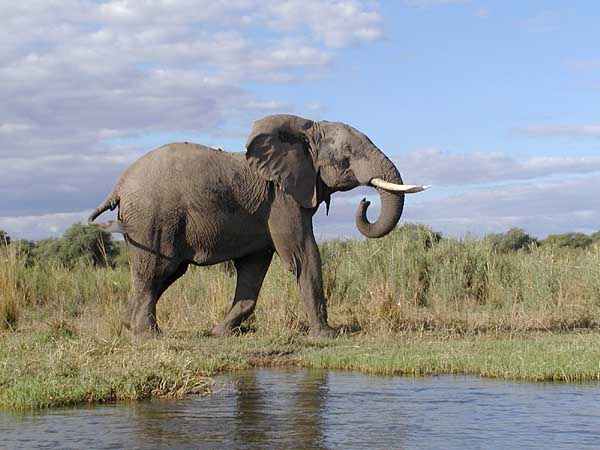

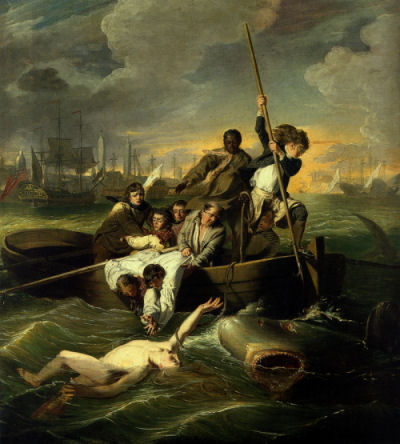

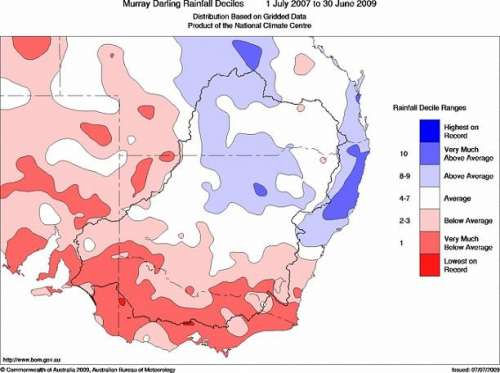 Higher rainfall should mean more water in public and environmental reserves, but it is going to private holdings instead and the public is not aware
Higher rainfall should mean more water in public and environmental reserves, but it is going to private holdings instead and the public is not aware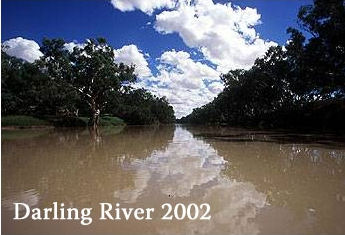 image from Fair Water Use site
image from Fair Water Use site 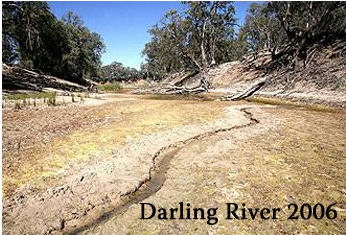 image from Fair Water Use site
image from Fair Water Use site  (Photo by Sheila)
(Photo by Sheila)
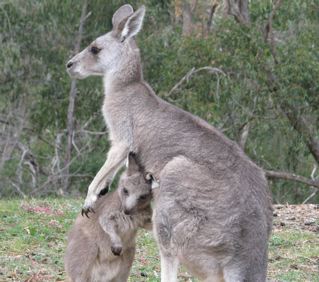
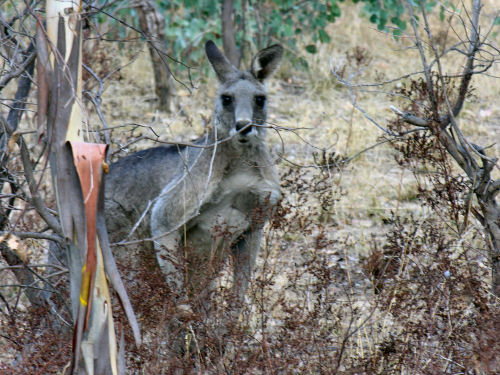
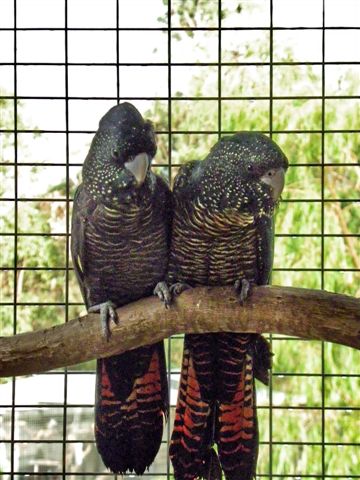 West Aust Black Cockatoos in rehab. Photo from Black Cockatoo Conservation Team
West Aust Black Cockatoos in rehab. Photo from Black Cockatoo Conservation Team Dr Maxine Piggott
Dr Maxine Piggott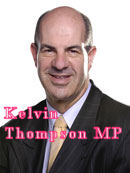
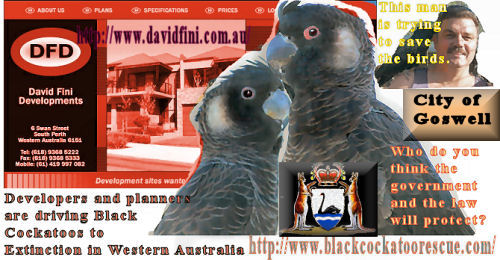
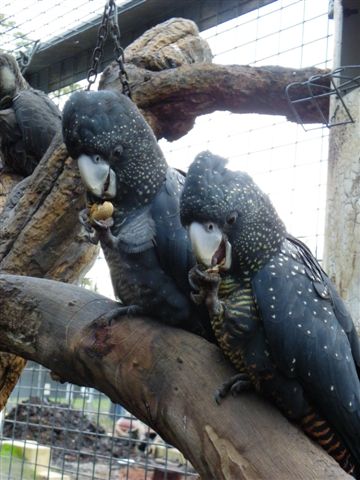
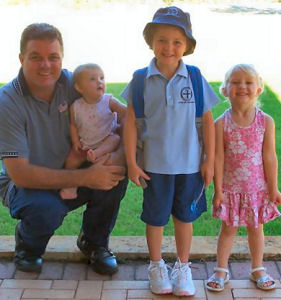 Glenn writes, "We have fought hard to do what we do; I have personally given all my energy and strength to bring the plight of these birds to every Australian and beyond. I at times have put the birds before my beautiful family and they have been very patient with me, allowing me to follow my passion in saving these endangered birds.
Glenn writes, "We have fought hard to do what we do; I have personally given all my energy and strength to bring the plight of these birds to every Australian and beyond. I at times have put the birds before my beautiful family and they have been very patient with me, allowing me to follow my passion in saving these endangered birds.  These people may have some power to change this situation:
These people may have some power to change this situation:

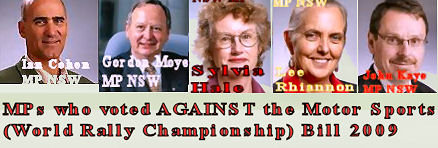 For MPs who voted FOR this awful bill,
For MPs who voted FOR this awful bill, 



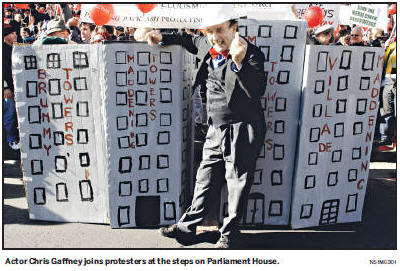
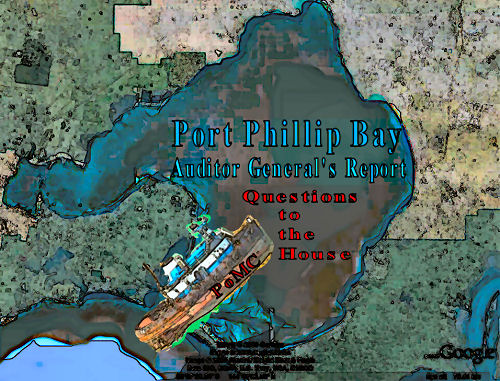


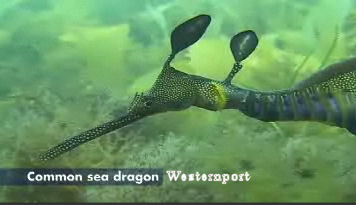
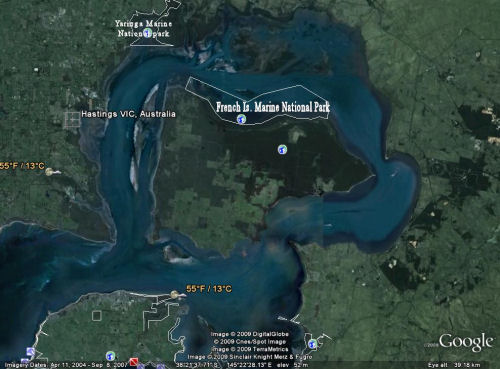
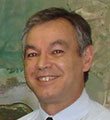 Ralph Kenyon
Ralph Kenyon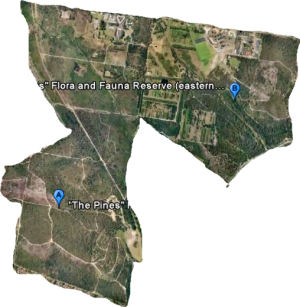 Frankston bypass cuts and damages wildife corridor via The Pines
Frankston bypass cuts and damages wildife corridor via The Pines
 The Black Cockatoo Conservation Team has just pulled off a remarkable rescue of wildlife habitat. One West Australian Black Cockatoo colony has been saved from the developers, in the nick of time, but the species is still not out of danger. Video-link inside article.
The Black Cockatoo Conservation Team has just pulled off a remarkable rescue of wildlife habitat. One West Australian Black Cockatoo colony has been saved from the developers, in the nick of time, but the species is still not out of danger. Video-link inside article. Last year we ran an article calling for help to save land for the Black Cockatoo at
Last year we ran an article calling for help to save land for the Black Cockatoo at 

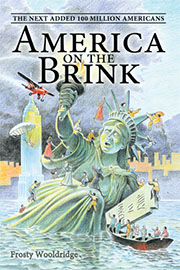
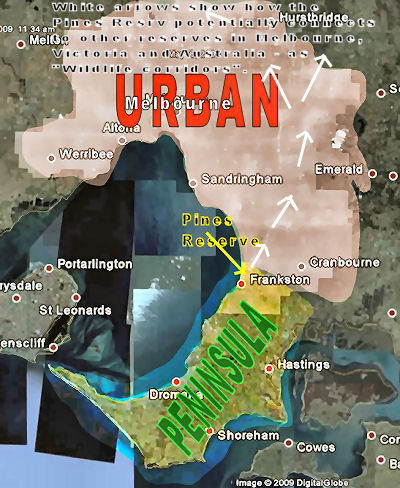 Ed. This article is adapted (with insertion of headings) from the introduction at
Ed. This article is adapted (with insertion of headings) from the introduction at 
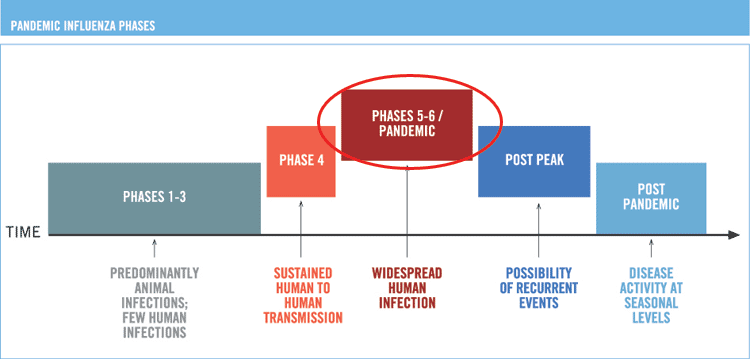


 This document is republished to give background dating from 2003 as the Victorian government began to take control away from citizens and locals over water, land and government, and to assume more and more control, in public-private associations. It was the beginning of overt attempts to promote private profit from induced scarcity. The induced scarcity was created by the government policy to grow Victoria's population and economic activities. At the time few Victorians had the faintest idea of what was going on. I was one of few environmentalists to question the authority of the government's actions.
This document is republished to give background dating from 2003 as the Victorian government began to take control away from citizens and locals over water, land and government, and to assume more and more control, in public-private associations. It was the beginning of overt attempts to promote private profit from induced scarcity. The induced scarcity was created by the government policy to grow Victoria's population and economic activities. At the time few Victorians had the faintest idea of what was going on. I was one of few environmentalists to question the authority of the government's actions.
Recent comments